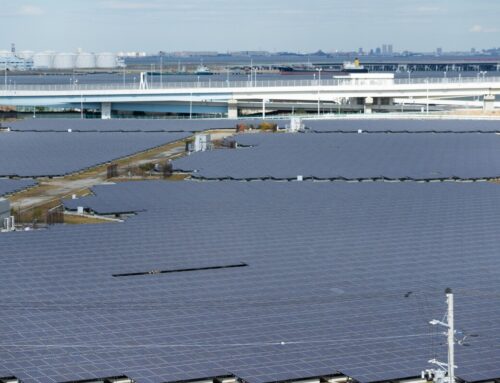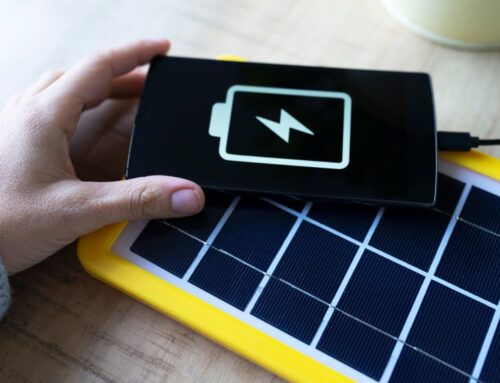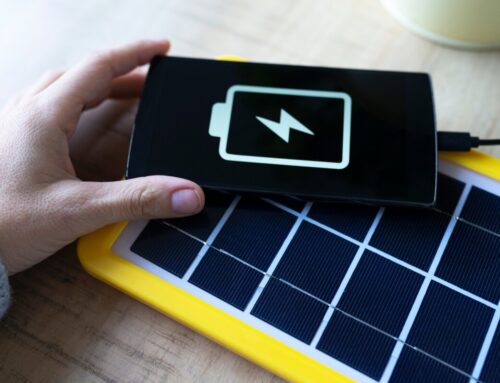Unlock the Science: How Solar Thermal Energy Works!
Understanding the Basics: What is Solar Thermal Energy?
Unlocking the science behind solar thermal energy is crucial as the world shifts towards sustainable energy solutions. Understanding how solar thermal energy works can empower individuals and businesses to harness this renewable resource effectively. Solar thermal energy captures sunlight to generate heat, which can be used for various applications, from heating water to powering industrial processes. By diving into the basics, we can appreciate the potential of this technology to reduce our carbon footprint and promote energy independence. Solar thermal energy is a method of harnessing the sun’s power to produce heat, which is then used for practical purposes.
Unlike photovoltaic systems that convert sunlight directly into electricity, solar thermal systems focus on capturing and concentrating solar radiation to heat a fluid.
Key Components of Solar Thermal Systems
- Collectors: Devices that absorb solar radiation and convert it into heat.
- Heat Transfer Fluid: A medium, often water or oil, that carries the absorbed heat to where it is needed.
- Storage Systems: Allow the heat to be stored for use when the sun isn’t shining, ensuring a continuous energy supply. By understanding these components, we can better grasp how solar thermal energy works and its role in sustainable energy solutions.
How Does Solar Thermal Energy Work? A Step-by-Step Guide
Unlocking the science behind solar thermal energy is crucial for understanding how we can harness the sun’s power to meet our energy needs sustainably. As the world shifts towards renewable energy sources, knowing the answer to “how does solar thermal energy work” can empower individuals and businesses to make informed decisions. Solar thermal energy systems capture sunlight to generate heat, which can be used for various applications, from heating water to powering industrial processes.
Capturing Sunlight
The process begins with solar collectors, typically flat-plate or evacuated tube collectors, which absorb sunlight. These collectors are designed to maximize the capture of solar radiation, converting it into heat. The efficiency of this step is crucial as it determines how much energy can be harnessed from the sun’s rays.
Heat Transfer and Storage
Once the sunlight is captured, the heat is transferred to a fluid, often water or a heat-transfer liquid, circulating through the system.
This heated fluid can be stored in insulated tanks for later use, ensuring a consistent energy supply even when the sun isn’t shining. By understanding these steps, we can appreciate the innovative ways solar thermal energy contributes to a sustainable future.
The Science Behind Solar Collectors: Harnessing the Sun’s Power
Unlocking the science behind solar thermal energy is essential for understanding how we can harness the sun’s power to meet our energy needs sustainably. Solar thermal energy is a clean, renewable source that can significantly reduce our carbon footprint. But how does solar thermal energy work? By delving into the science of solar collectors, we can uncover the mechanisms that make this technology so effective.
These devices capture sunlight and convert it into heat, which can then be used for various applications such as heating water or powering turbines. But how does solar thermal energy work in these collectors? The process begins with the absorption of solar radiation by a collector’s surface, which is typically coated with a material that maximizes heat absorption while minimizing reflection.
Key Components of Solar Collectors
- Absorber Plate: This is where the magic happens. The absorber plate captures sunlight and converts it into heat.
- Insulation: To prevent heat loss, collectors are insulated, ensuring that the captured heat is retained for use.
- Fluid Circulation: A heat-transfer fluid circulates through the collector, absorbing the heat and transporting it to where it’s needed. By understanding these components, we gain insight into how solar thermal energy works efficiently to harness the sun’s abundant energy.
Read Also: How Does a Solar Power Plant Generate Clean Energy?
Exploring the Different Types of Solar Thermal Systems
Unlocking the science behind solar thermal energy is essential for understanding how this sustainable technology can transform our energy consumption. Solar thermal energy harnesses the sun’s power to generate heat, offering a clean and efficient alternative to fossil fuels. But how does solar thermal energy work in different systems? Let’s explore the various types of solar thermal systems and discover their unique functionalities. Solar thermal systems come in several forms, each designed to capture and utilize solar energy in distinct ways.
The most common types include flat-plate collectors, evacuated tube collectors, and concentrating solar power systems. Understanding these systems helps us appreciate the versatility of solar thermal energy and its potential applications in our daily lives.
Flat-Plate Collectors
Flat-plate collectors are the most widely used solar thermal systems. They consist of a flat, insulated box with a transparent cover and a dark absorber plate that captures sunlight. These systems are ideal for residential water heating and space heating applications, providing a straightforward and cost-effective solution.

Curious about solar? Let us help you discover how solar energy can revolutionize your home and save you money. Request Your Free Solar Estimate at SOLAR ENERGY
Concentrating Solar Power
Systems Concentrating solar power (CSP) systems use mirrors or lenses to focus sunlight onto a small area, generating high temperatures. This concentrated heat is used to produce steam, which drives a turbine to generate electricity. CSP systems are particularly effective for large-scale power generation, showcasing how solar thermal energy works on an industrial level.
The Role of Heat Transfer Fluids in Solar Thermal Energy
Understanding the intricacies of solar thermal energy is crucial for harnessing its full potential. As we unlock the science behind how solar thermal energy works, one key component stands out: heat transfer fluids. These fluids play a pivotal role in capturing and transferring solar energy, making them indispensable in solar thermal systems.
- Efficient Energy Absorption: These fluids absorb heat from the sun’s rays, which is then used to heat water or air in solar collectors.
- Thermal Stability: They maintain their properties under high temperatures, ensuring consistent energy transfer. By efficiently capturing and transferring heat, these fluids enhance the overall efficiency of solar thermal systems. Moreover, the choice of heat transfer fluid can significantly impact the system’s performance.
- Types of Fluids: Common options include water, oil, and specialized synthetic fluids, each with unique properties.
- System Compatibility: Selecting the right fluid ensures compatibility with system components, optimizing energy transfer and minimizing maintenance. Thus, understanding how solar thermal energy works involves recognizing the critical role of these fluids in maximizing energy efficiency.
Innovative Applications: From Residential to Industrial Uses
Unlocking the science behind solar thermal energy reveals a world of innovative applications that extend from residential rooftops to expansive industrial complexes. Understanding how does solar thermal energy work is crucial as it harnesses the sun’s power to generate heat, offering a sustainable and efficient energy solution. This technology is not only transforming how we power our homes but also revolutionizing industrial processes, making it a cornerstone in the transition to renewable energy sources.
Residential Solutions
- Solar Water Heaters: These systems capture sunlight to heat water for domestic use, reducing reliance on conventional energy sources and lowering utility bills.
- Space Heating: Solar thermal panels can be integrated into home heating systems, providing a consistent and eco-friendly heat source.
Industrial Applications
- Process Heating: Industries use solar thermal energy to generate high temperatures required for processes like pasteurization and sterilization, significantly cutting down on fossil fuel consumption.
- Desalination: Solar thermal technology is employed to convert seawater into potable water, addressing water scarcity issues in arid regions. By understanding how does solar thermal energy work, industries can leverage these applications to enhance efficiency and sustainability.
Environmental Benefits: Why Solar Thermal Energy is a Sustainable Choice
Unlocking the science behind solar thermal energy reveals a world of sustainable possibilities. As we strive to reduce our carbon footprint, understanding how solar thermal energy works becomes crucial. This renewable energy source harnesses the sun’s power to heat water or air, offering a clean alternative to fossil fuels. By exploring its environmental benefits, we can appreciate why solar thermal energy is a sustainable choice for the future.
Solar thermal energy stands out for its minimal environmental impact. Unlike traditional energy sources, it produces no greenhouse gases during operation, significantly reducing air pollution. This clean energy solution not only helps combat climate change but also conserves natural resources, making it a pivotal player in sustainable development.
Key Environmental Advantages
- Reduction in Carbon Emissions: Solar thermal systems operate without emitting carbon dioxide, helping to mitigate global warming.
- Resource Conservation: By utilizing the sun’s abundant energy, solar thermal technology reduces reliance on finite resources like coal and natural gas.
- Biodiversity Protection: With less pollution and habitat disruption, solar thermal energy supports healthier ecosystems, ensuring a balanced environment for future generations.
Challenges and Solutions in Solar Thermal Energy Implementation
Unlocking the science behind how solar thermal energy works is crucial for advancing sustainable energy solutions. As the world shifts towards greener alternatives, understanding the challenges and solutions in solar thermal energy implementation becomes vital. This knowledge not only empowers stakeholders to make informed decisions but also paves the way for innovative advancements in harnessing solar power efficiently.
Technical Challenges
Implementing solar thermal energy systems often faces technical hurdles, such as the need for large areas to install solar collectors and the complexity of integrating these systems with existing energy infrastructures. Additionally, the efficiency of solar thermal systems can be affected by weather conditions, which can limit their reliability and output.
Innovative Solutions
To overcome these challenges, advancements in technology have led to the development of more efficient solar collectors and thermal storage systems. Innovations such as hybrid systems that combine solar thermal with other renewable sources are also being explored to enhance reliability. Moreover, strategic site selection and improved materials are helping to mitigate space and weather-related issues, making solar thermal energy a more viable option for sustainable energy production.
How SolarEnergy Can Help You Embrace Solar Thermal Technology
Unlocking the science behind solar thermal energy is crucial for anyone looking to embrace sustainable energy solutions. Understanding how solar thermal energy works can empower individuals and businesses to make informed decisions about integrating this technology into their energy systems. At SolarEnergy, we are dedicated to helping you navigate the complexities of solar thermal technology, ensuring you harness its full potential for a greener future.
Expert Guidance and Resources
Our team at SolarEnergy provides expert guidance and a wealth of resources to help you understand how solar thermal energy works.
We break down the science into easy-to-understand concepts, offering insights into the mechanisms that convert sunlight into heat energy. Whether you’re a homeowner or a business owner, our resources are tailored to meet your specific needs, ensuring you have the knowledge to make the best energy choices.
Customized Solutions for Your Needs
At SolarEnergy, we recognize that every energy requirement is unique. That’s why we offer customized solutions to help you integrate solar thermal technology seamlessly into your existing systems.
From assessing your energy needs to recommending the best solar thermal products, we ensure that your transition to solar energy is smooth and efficient. With our support, you can confidently embrace solar thermal technology and contribute to a sustainable future.
Don’t wait to go solar! Thousands of homeowners are saving—join them and start reaping the benefits.
Book Your Free Consultation at SOLAR ENERGY
Explore additional solar solutions at NEW SOLAR QUOTES and discover how it can benefit your home!









